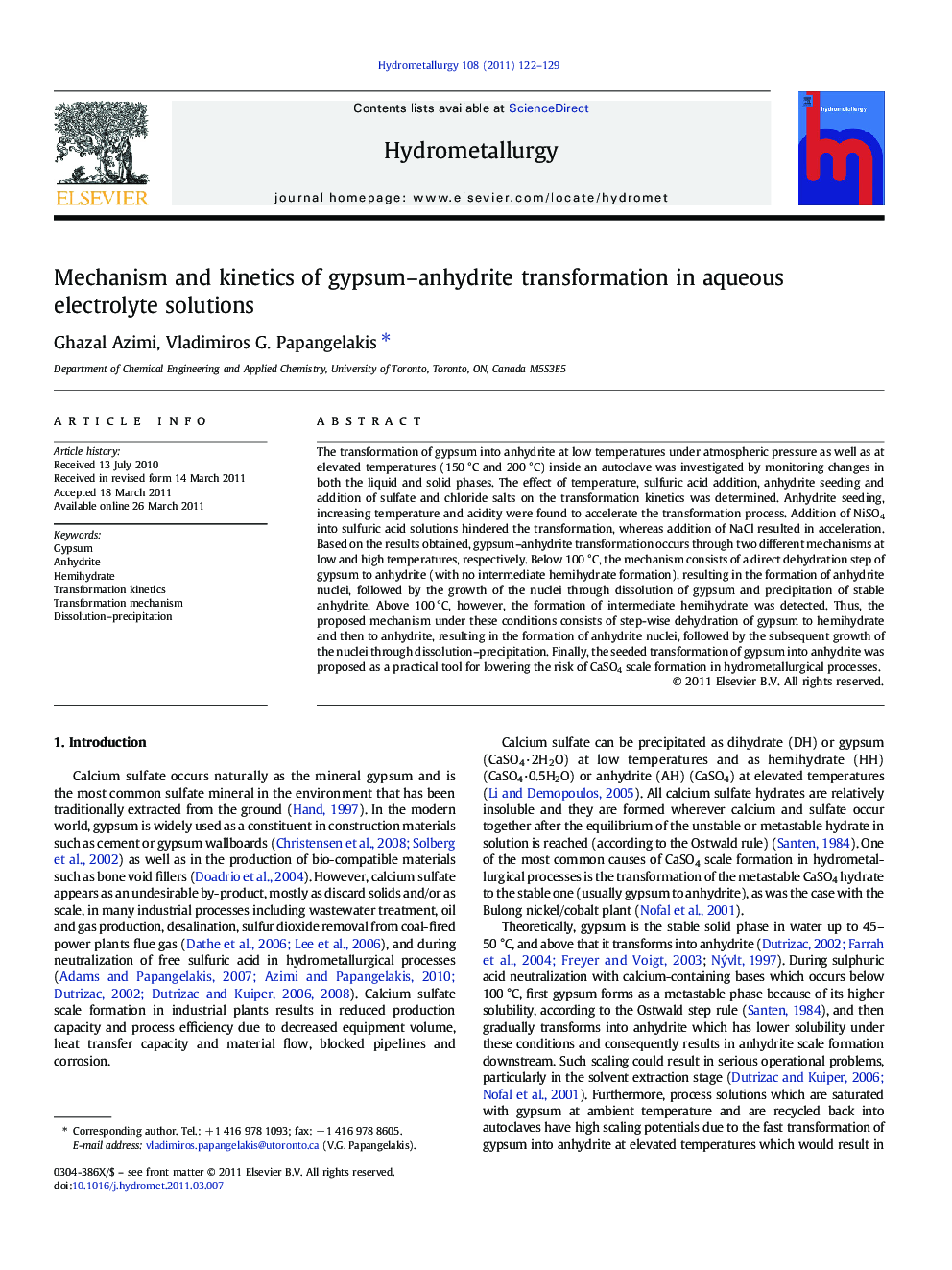| کد مقاله | کد نشریه | سال انتشار | مقاله انگلیسی | نسخه تمام متن |
|---|---|---|---|---|
| 212695 | 462062 | 2011 | 8 صفحه PDF | دانلود رایگان |

The transformation of gypsum into anhydrite at low temperatures under atmospheric pressure as well as at elevated temperatures (150 °C and 200 °C) inside an autoclave was investigated by monitoring changes in both the liquid and solid phases. The effect of temperature, sulfuric acid addition, anhydrite seeding and addition of sulfate and chloride salts on the transformation kinetics was determined. Anhydrite seeding, increasing temperature and acidity were found to accelerate the transformation process. Addition of NiSO4 into sulfuric acid solutions hindered the transformation, whereas addition of NaCl resulted in acceleration. Based on the results obtained, gypsum–anhydrite transformation occurs through two different mechanisms at low and high temperatures, respectively. Below 100 °C, the mechanism consists of a direct dehydration step of gypsum to anhydrite (with no intermediate hemihydrate formation), resulting in the formation of anhydrite nuclei, followed by the growth of the nuclei through dissolution of gypsum and precipitation of stable anhydrite. Above 100 °C, however, the formation of intermediate hemihydrate was detected. Thus, the proposed mechanism under these conditions consists of step-wise dehydration of gypsum to hemihydrate and then to anhydrite, resulting in the formation of anhydrite nuclei, followed by the subsequent growth of the nuclei through dissolution–precipitation. Finally, the seeded transformation of gypsum into anhydrite was proposed as a practical tool for lowering the risk of CaSO4 scale formation in hydrometallurgical processes.
Research Highlights
► In this study we investigated the gypsum-anhydrite transformation below 100 °C and from 150 to 200 °C.
► Increasing temperature and acid addition accelerated the transformation process.
► Addition of NiSO4 hindered the transformation, whereas NaCl resulted in acceleration.
► Two mechanisms were proposed for the transformation process at low and high temperatures.
► Induced gypsum transformation was proposed as a mean to mitigate CaSO4 scaling.
Journal: Hydrometallurgy - Volume 108, Issues 1–2, June 2011, Pages 122–129